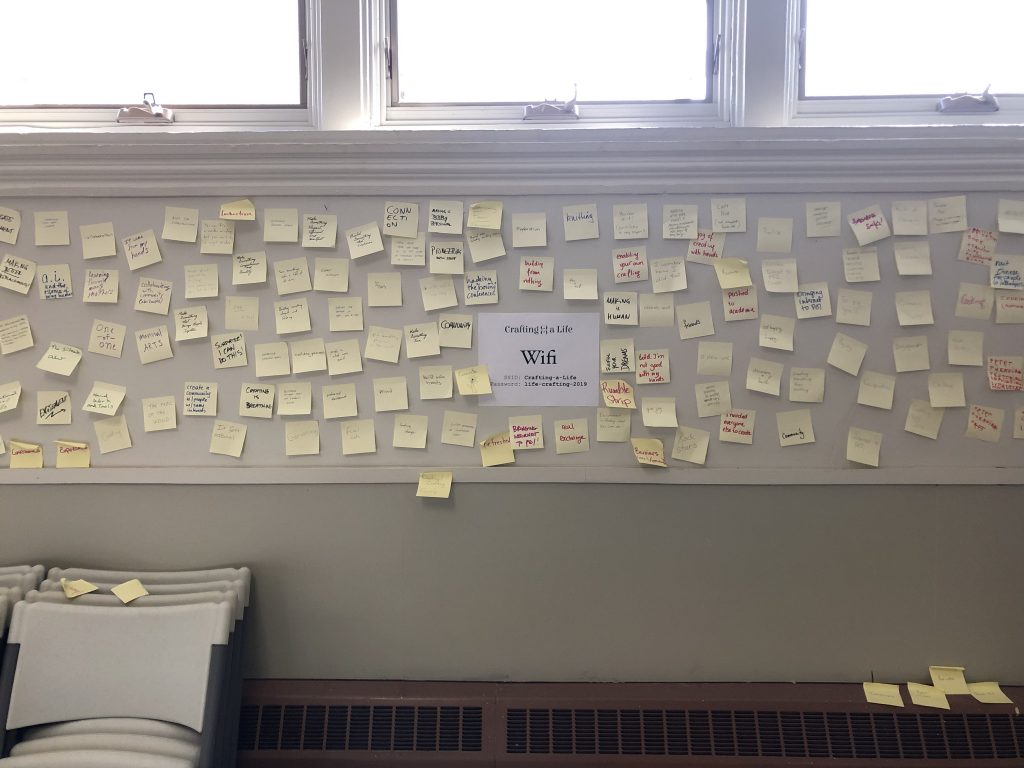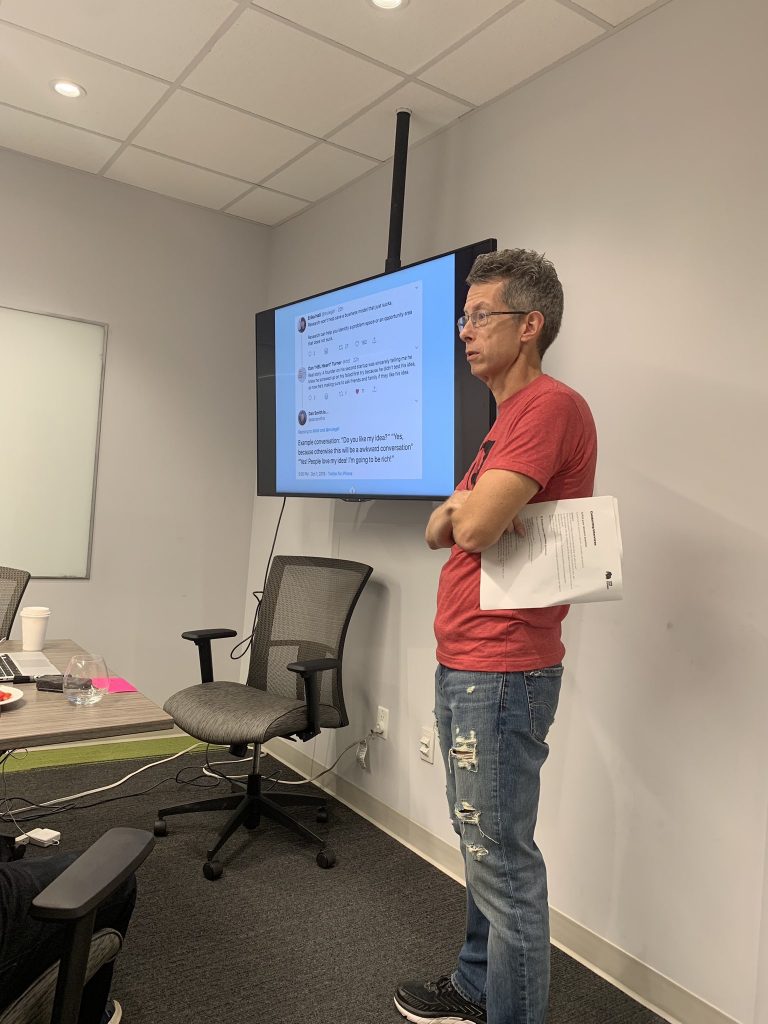
“There is no one way”. Outside the unconference.
This Friday and Saturday past I had the pleasure to attend Peter’s unconference, Crafting {:} a Life. It was both humbling and inspirational; humbling to meet so many who have done so much with their lives and for their communities, and inspiring to think that maybe I might follow their example. I’m still taking notes, processing all that I learned but I thought I might share some initial impressions before it fades.
Since returning to PEI I have been gorging myself in a veritable Chinese buffet of workshops, networking events, talks and conferences. I’ve also been forcing myself to escape my introverted ways long enough to try and have conversations with people; after almost every conversation I can come away with one point, that might inspire me to try some new direction or file an idea away for possible later use. But many (not all) of the workshops attended left me feeling empty, with little inspiration or actionable information, and tired of the same old routine of pitching and business card swapping. There was little opportunity for discussion and in some cases I got the impression that these good people were placed in a box where they were forced to be an expert in a topic, for which they had little expertise.
Crafting {:} a Life was a breathe of fresh air. The unconference dispensed with pretension, titles or faux expertise. Everyone had for the most part a chance to share their story, contribute, and talk. While some asked what I did for a living, it was only after all other avenues of discussion were explored. For the most part one-to-one conversations were much like what I had with Robert Patterson, (“What is Clark’s story” he asked) open ended, personal, and with the ability to discover new things about the other. The activities emphasized small groups and there was no “oh my God my PPT is out of order what will we talk about” that I myself have fallen victim to. There was music, laughter, food and tears. It was genuine, a great counterpoint to the Instagram-isation of everything.

I had one small disappointment. The first activity involved breaking off into small groups and sharing the thing you have created that you are most proud of. This is far superior to forcing a group full of introverts to stand up and one by one introduce themselves, whereby many would fall back on the oft spoken 2-3 liners spoken everywhere. After each person told their story we wrote down keywords on sticky notes that described what we heard. In the end a whole wall was filled with notes describing the attendees stories. What would have been interesting would have been to analyze that data and see what emerged. It often seems a shame to have a bucket of data and not do something with it. I say this in hindsight, as the thought didn’t occur to during the days of the event.
The conference structure itself and the conversations that resulted were the highlights, and I think how I hold talks in the future may forever be changed, but being taken by Leo Cheverie to the ‘Tent town’ was an opportunity I might not have otherwise enjoyed. While there I was fortunate to meet our Mayor and have a short talk. Luckily he is an amiable guy as I criticized the recent survey released by his council to help address the housing crisis. I told him it was the worst research attempt I had ever seen and I hoped no decisions would be made based on the bad data collected. He said he was displeased with the survey as well, but not due to bad research design, but because the comments section had no line break. I talked with members of the affordable house group(?), asking why they created such a biased survey, instead of perhaps using qualitative methods, their response was that they had to do something to counter the city’s own survey. Unfortunately 2 bad sets of data does not create more insight. I’m thinking that what Powerpoint has done to communication, Survey Monkey has done to research.
With intention, the simple act of spending time together talking about life for a while, Crafting {:} a Life has set a very high bar and is one the highlights of what is fast becoming our first year on the Island.
Crafting {:} a Life Unconference Day 1
Crafting {:} a Life Unconference Day 2
Crafting {:} a saga
Leaving PEI
Fantasy Cartography
Crafting {:} a life






